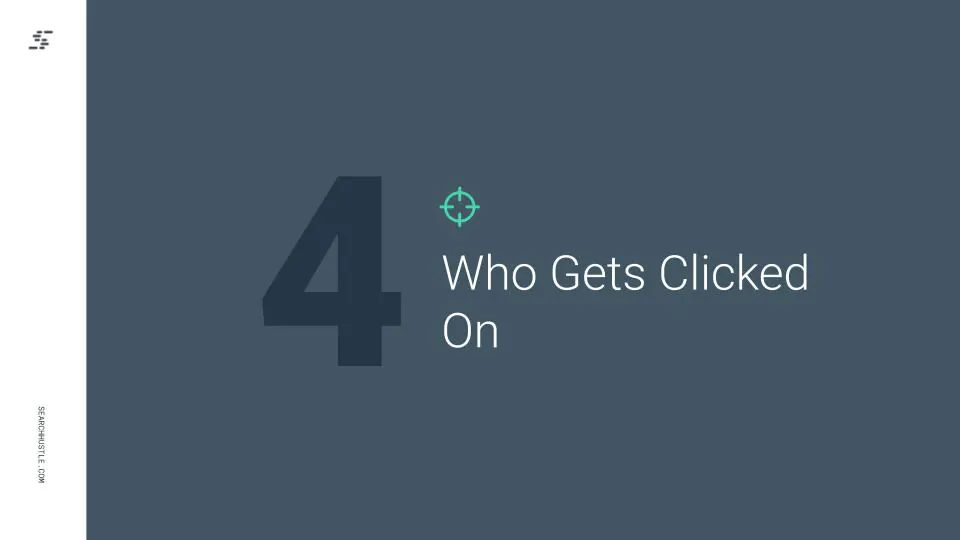How People Search
Learn about how people search on web browsers and user intent with Search Hustle.

Back when search engines were relatively new, they were fairly easy to manipulate. If a person wanted to rank a web property in the SERPs, they’d need to keyword stuff the content and get as many backlinks as possible from any sources they could find (legitimately or otherwise).
Would you believe web developers would put white text on a white background to stuff keywords on web pages? And, no, I am not talking about the metadata here either! These days, that type of black hat SEO won’t work and could incur penalties from almost any good search engine.
Nowadays, things are far more complex. Google uses various algorithms to rate websites, rank content, and provide search results that meet users’ needs. These search algorithms consider many factors to deliver the most helpful information possible. Key factors include relevance, the words in the search query, the user’s location, and the source’s expertise. But there are more, which we will cover in due course.
Because of these ever-changing algorithms, anything related to SEO is a continually evolving process. You also need to understand how people search for information online to get your website to rank.
To provide the best user experience, search engines like Google are constantly changing based on the data they collect. Whether they deserve this much access to the data is not a topic we will cover in this book – we don’t want to bite any hands. An SEO expert’s job is to ensure websites evolve in line with these changes, ensuring a website continues to be visible in search and perform optimally.

What Does User Intent Mean?
For a search to return relevant results for a query, it must first understand what information the user is after – AKA, the intent behind their query. Generally speaking, you can segment user intent into two different search goals
- The user is looking for information that relates to a keyword.
- The user is looking for generalized information about a topic.
From here, user intent can be divided into specific or exhaustive categories. A specific user has a narrow search intent, while an exhaustive user has a wider scope around a specific topic.

The Concept of Do, Know, and Go
Do, Know, Go is the concept that all search queries can be segmented into one of three categories. In turn, these categories help determine the results that Google returns.
What is a Transactional query?
The user wants to achieve a specific action with a “do” or transactional query. This could mean they wish to purchase a product or a service.
When a user is performing a transactional query, it is often on a mobile device. More than half of all web traffic is mobile these days. Nearly 62% of smartphone users have purchased from their devices in the past six months; undoubtedly, these mobile-first spending habits will continue to rise.
This is why businesses must ensure a mobile device’s user experience (UX) is as good as the UX from a desktop version of the site.
Google now uses a mobile-first index. So, it’s critical to check your SEO, viewports, CTAs, and content from a mobile device, not just on a desktop. If your business has an e-commerce site, you must ensure the website loads quickly and is user-friendly for smartphone users who will likely be looking to make a purchase.
What is an Informational query?
A “know” or informational query is when the user wants to learn about a specific subject. Informational queries are often linked to micro-moments.
A micro-moment is when a user needs to satisfy a specific query immediately. Frequently, there is a time factor associated with this type of query. For example, users might search when their public transit arrives or departs.
It’s also worth noting that informational queries are neither transactional nor commercial. Often, a person will do some product research with a query but is not ready to purchase. We call these TOFU and MOFU searches, short for Top of the Funnel and Middle of the Funnel.
What is a Navigational query?
When users do a “go” query, they generally want to go to a specific location or website. A navigational query often centers around a brand.
For example, a user searching for ASICS shoes could be shown local search results of stores that sell this brand.

The User Journey
Let’s look at a hypothetical user experience. In this example, the user is searching for shoes online.
As the searcher shops for shoes, they want to know more about the ASICS brand, so the first query might be an informational (“know” query).
So, the user’s first search might be “pros and cons of ASICS shoes.” The user then clicks on the top result. Once satisfied that this brand meets their needs, they might input “ASICS shoes for runners” into their web browser. They review several results before clicking on “shoewarehouse.net,” which they browse for about two minutes.
From there, the user heads over to the manufacturer’s site, “Asics.com,” for about a minute. Next, they enter a new search query: “discount ASICS shoes.” The user wants to see if any older, less expensive models can be purchased since runners often burn through their shoes quickly.
This leads the user to click on another online retailer’s website from the SERPs. The user stays on that website for about four minutes.
After that, the user enters a more detailed search query: “best men’s running shoes.” This takes the user to an article at runnersworld.com for 12 minutes before entering another search query: “ASICS Kayano 5.”
This is where the query has evolved from a “know” query to a “transactional” or “do” query. Now, they go to another retailer’s website, spending nearly 23 minutes before finally purchasing.
The user performed five searches over 42 minutes before purchasing in this shopping sequence. You can see the user worked to solve a problem and didn’t stop until they found a solution. The user looked at queries throughout the funnel: TOFU, MOFU, and BOFU (bottom of the funnel).
During the buyer’s journey, users frequently begin with a general search term (short tail queries are 1-3 words long) and then gradually get more specific (long tail queries are 3-5 words, sometimes more) as they get closer to their goal.
This is just one example of a search sequence, as you can imagine, the variations are endless.

Who Gets Clicks?
If you aren’t ranking on the first page of the SERPs, then you are losing out on valuable traffic. It won’t matter how well-written the content is if no one reads it. If users aren’t making it to your web page, then it is unlikely they will purchase products or services from you.
The first page of the SERPs generates the most traffic. The first organic result in Google Search earns 28.5% of the average click-through rate.
After that, the average CTR drops precipitously. The second position only gets a 15% CTR, and the third position gets 11%. Compare that to the tenth position, which only receives a measly 2.5% CTR. Beyond that, CTRs only get worse. Users rarely venture into the wastelands of the second or third pages of search results.
Why You Need SEO
As you can see, a user’s journey can take them to various websites in search of information and products, and lead them down the sales funnel. However, if the business website isn’t top-ranking, it has little to no odds of getting clicked on.
Search engines like Google are becoming increasingly smarter. They now use keywords and context in combination to accurately deliver results for a search term.
This is why SEO can help give a business website an edge over the competition in appearing higher in search results. With SEO best practices, a business website gets better brand visibility, increased web traffic, and ultimately, growth in revenue as people search the web to meet their needs and then find your products or services.

Ready to Take Your Search Hustle Further?



